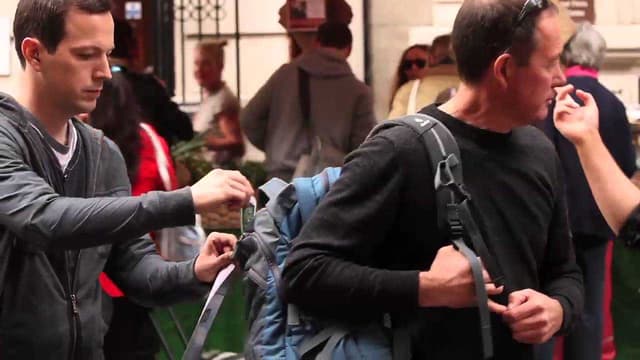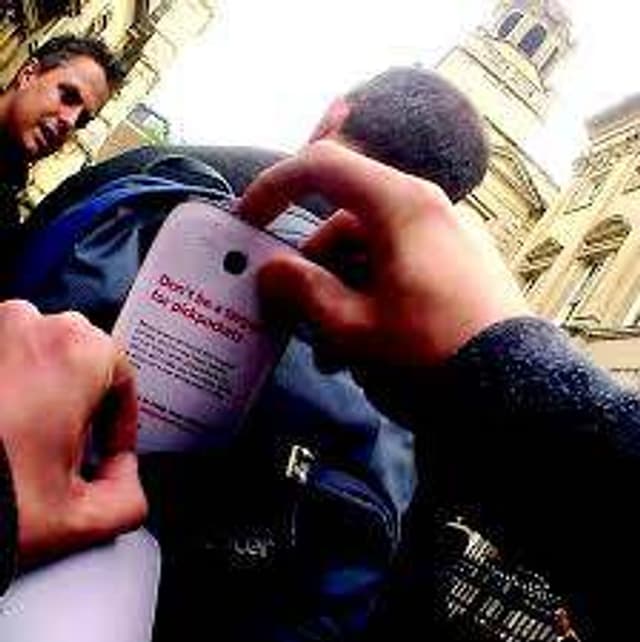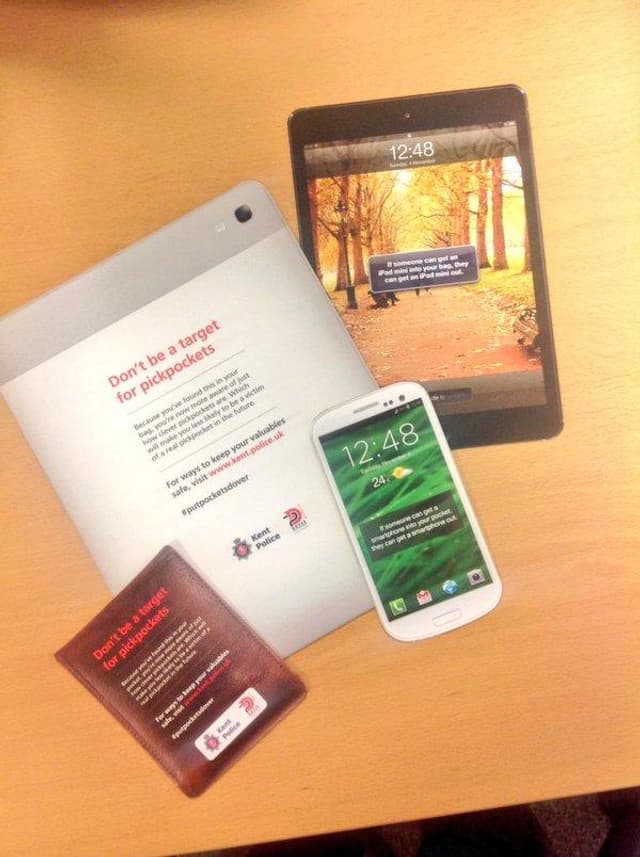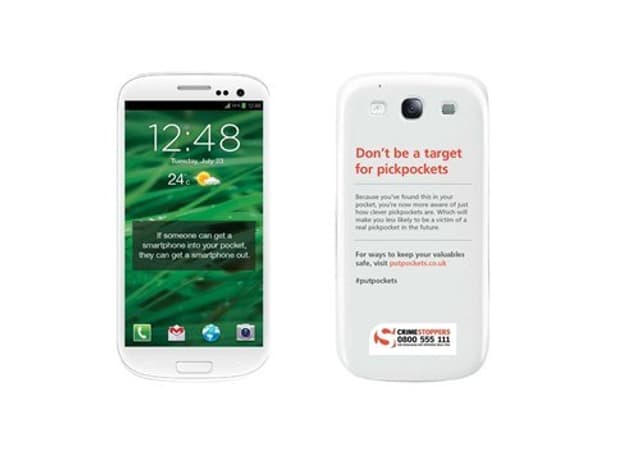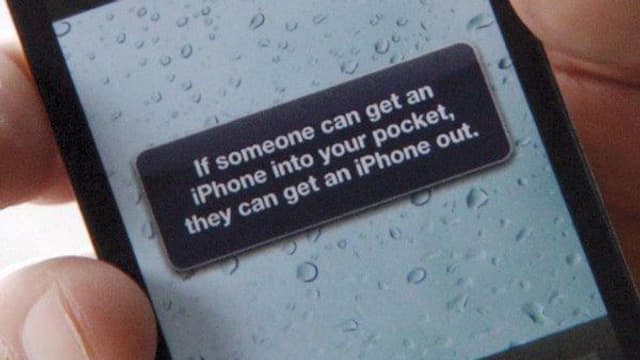Crimestoppers: reverse pickpocketing is putpocketing
- Exhibited by
- Andy Perry, Trusts & Legacies Fundraiser, St Catherine's Hospice
- Added
- June 30, 2016
- Medium of Communication
- Social media, online, broadcast media
- Target Audience
- General public, regional police forces, crime-stopping groups
- Type of Charity
- Public/society benefit
- Country of Origin
- UK
- Date of first appearance
- January 2014
SOFII’s view
This is an innovative and imaginative integrated campaign using behavioural science, magicians and social media to change public behaviour and to highlight the dangers and raise awareness of pickpocketing across the UK.
Summary / objectives
The aim of the campaign is to influence long-term behavioural change towards stealth crime and to raise awareness of pickpocketing.
Background
In January 2014, Crimestoppers (the UK independent charitable organisation working with the police, the media and the community to fight crime) launched a hard-hitting campaign to shock the public about pickpocketing.
Everyday, over 1,700 of us have something taken from our bags or pockets. The solution to this is normally to use warning posters in areas where thieves operate. However posters can actually make matters worse as we tap our valuables to ensure they’re still there - sending a clear signal to pickpockets near by. Crimestoppers needed to find a new way to make people aware of the risks and convince police forces to trial it across Britain.
The aim of the campaign is to influence long-term behavioural change towards stealth crime, where no force is used and the victim is unaware of the crime. Pickpocketing accounts for 70-80 per cent of these incidents. There are also strong links between rising ‘theft from the person’ and increased ownership of smartphones, with these being the most stolen item nationally (25 per cent of victims had their phone stolen). The charity wants to raise awareness of this type of crime across the UK.
The #putpockets campaign involved the secret filming of pedestrians being targeted by a team of sleight-of-hand experts and former pickpockets. Leaflets designed to look like smartphones, Ipads and wallets were distributed in two major cities. But rather than putting the leaflets into people’s hands, they were put directly into people’s pockets or bags. The cards carry the warning that if someone can get something into your bag, they can also get something out. People were directed to the #putpockets website for more information.
The integrated campaign and digital hub hosted on Crimestoppers' website was designed by OgilvyOne. The website shows the putpockets in action and the various tactics they use and gives simple tips on what people can do to protect themselves from pickpockets. The campaign was also supported by social media using #putpockets.
Here's the film.
Results
For every 100 leaflets dropped into pockets and bags, there were 93 visits to the site. Average dwell time was 3.32 minutes. The low cost pilot generated £7.5 million of free PR. Crimestoppers achieved their aim of starting a roll out across the UK; within just 24 hours of #putpockets being featured on Sky News, Crimestoppers had been contacted by another police force wanting to run it. The overwhelming publicity attracted lots of support and interest from crime prevention groups across the country and there are now three police forces who want to try #putpockets in their areas.
Merits
I like #putpockets as it was a novel creative idea. People really took notice of it, more than they would to a poster, which is often seen and instantly forgotten. And in any case a traditional anti-pickpocket poster would've caused people to pat their valuables effectively creating a target for thieves. The campaign reached out directly to their target audience and, by being interactive, it showed people it could happen to them.
Here's what Roger Critchell, director of operations for Crimestoppers, said:
We want to highlight how easy it is for someone to be a victim of crime without even knowing a crime against them is taking place. It is not intended to scare the public, but is in fact designed to educate them about the dangers of prowling pickpockets and to ask them to ensure they are vigilant when out and about.
Emma de la Fosse, executive creative director at OgilvyOne UK, said:
By using old techniques in new ways, we actively created what scientists call a ‘hot state’, which is conducive to lasting behavioural change. Exposing people to the possibility of something, but without them being directly affected, is proven to create greater resonance and impact. We want to make Crimestoppers central to a real shift in the nation’s attitude towards this crime.
The normalcy bias refers to a phase people enter when making a decision. It causes us to under-estimate the possibility of an event occurring and its possible effects. In short, we never believe it will happen to us.
Unlike posters and leaflets you’d pick up, the #putpockets experiment eliminates the effects of the normalcy bias by demonstrating that anyone can fall victim to a pickpocket, even you.
Other relevant information
This case study was presented at an IWITOT session for the IoF Legacy SIG in January 2016.
I work for St Catherine's Hospice as the trusts and legacies fundraiser. St Catherine’s Hospice is a charity dedicated to providing specialised end of life care and support to local people, their families, friends and carers. For over 30 years we have been providing high quality hospice care, free of charge, to people living in Crawley, Horsham, mid Sussex and east Surrey.
Our care is only made possible thanks to the generosity of supporters and volunteers. Just over £2.5m of our funding is provided by the NHS and we rely heavily on the support of local people, companies and trusts to raise the rest of our running costs. Each year we need to raise £6m in voluntary income to ensure we can keep providing our vital services to those who need them.
Our legacy income is budgeted at £1.4m for 2015/16 and around 25-50 per cent of legacies (by number) come from next of kin, who have made an in-memoriam gift. So this is a key audience in view of their experience of both the service and their engagement as demonstrated by their donations.
The problem is how do we raise awareness of legacies in this important audience? Well in an ideal scenario we could promote legacy giving within say six to 12 months of a bereavement, but obviously this would need to be handled in an extremely sensitive way. Any promotional work must not be seen to be intrusive and any approaches have to be appropriate to the individual's situation.
Here are my take-homes for applying the #putpockets concept to legacy fundraising:
- Need to find a tool that is interactive (more than just a letter).
- Something which is appropriate to in-memoriam donors.
- Capable of conveying a short, but simple legacy message.
Could seed cards be the answer?
- Often used as part of in-memoriam fundraising.
- Flowers are permanent and will evoke memories of a loved one.
- Messaging can link to the care given by the hospice to a loved one.
Potential drawbacks
- How would it fit with current in-memoriam stewardship and activity?
- Will need the buy-in of other staff.
- Getting the timing right from the perspective of the donor.
In summary
- An overall stewardship project across all our fundraising activity has just commenced.
- There is organisational support for legacy marketing activity.
- To be explored further with colleagues.
If anyone has tried something similar, I’d love to know your experience.
Also in Categories
-
- Digital fundraising


